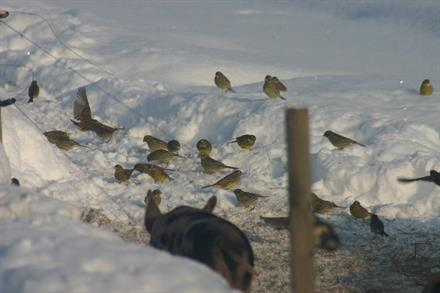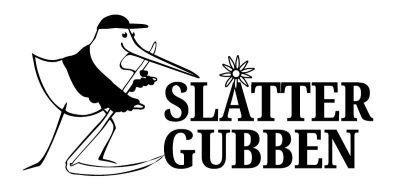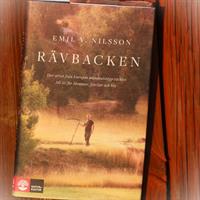Bird-friendly garden – how do you do it?
What did the birds live on before? Before we fed them
 Bird feeding by chance, yellowhammers with the outdoor pig.
Bird feeding by chance, yellowhammers with the outdoor pig.
First, we need to understand what birds used to live on during the winters in the past before we actively fed them. We can combine that knowledge with today's society and our new ways of feeding birds. That's when it gets really interesting! We need to identify what is missing today. What have our resident birds survived on all these years when we didn't actively feed them? It’s clear that resident birds like the crested lark and corn bunting are almost entirely absent in Sweden today. They thrived remarkably well in the early 1900s when the bird feed industry (which is today a billion-dollar industry) made roughly 0 SEK.
And what is causing many of the migratory birds associated with agricultural landscapes to have declined so much? How can we help them?
Imagine that in every small barn out in the countryside there were animals.
Hundreds of thousands of small, living farms were a laid-out bird table that has now been replaced by a few large animal industries. Small-scale farming and animals lead to good opportunities for foraging. Here, yellowhammers forage in the remnants of hay and feed near the outdoor pigs.
 Manure, straw, and hay. There is always something for the overwintering birds.
Manure, straw, and hay. There is always something for the overwintering birds.
Daily mucking out – there are always seeds, dead and live insects. A handful of hay on the ground for the horse so it stands still – some grass seeds remain and maybe a dried beetle.
Before the era of cars and trucks, at least in Skåne, the roads were laid out like a bird table. Here came spills and horse manure year-round. They were kept somewhat clear through trampling and shoveling. New seeds, insect eggs, pupae, and insects continually appeared during the winter.
Hundreds of thousands of living farm environments – in and out with people, animals, hay, straw, and feed - there's always something left for the yellowhammers, among others.
Animals that are outside/get to go outside in winter. They trample around, pull things apart, lose fleas, and spill feed. Many birds thrive here. Partridges usually scurry around the sheep. Animals sometimes die, and a dead animal is an enormous amount of food for crows, birds of prey, and blackbirds. In times when almost everything was home-slaughtered, leftovers remained.
 In the compost, something tasty can always be found.
In the compost, something tasty can always be found.
Mills in every small village have been replaced by a few highly efficient and waste-free large industries. Rational and back-saving for us, but unfortunate for yellowhammers, crested larks, corn buntings, and others that foraged in waste piles and spills outside the mill.
Trash heaps and compost – birds are not fond of the fact that all waste is now handled in plastic bags and incinerated at central facilities. Sealed composts aren't favorites either. Many birds enjoy rummaging through the compost. I suspect that owls like to sit in trees at night waiting for a mouse or rat above the open compost. Can we then say that we're also feeding the owls?
How can we, as bird enthusiasts, contribute to a more vibrant agricultural landscape?
 Ground feeding with field seeds.
Ground feeding with field seeds.
The tips below start with the simplest ones, not just physically but also mentally, as they often turn norms and values upside down. And you need to be strong to dare to do that! Here, we provide good arguments. Many of the tips also require living in the countryside.
Just by feeding the birds, you create something that breaks up the wintry landscape. It’s not just any pile of compost but prime nutrition for the birds.
Choose organic food for both yourself and the birds, and you’ll easily contribute to a more vibrant landscape where food is grown. On these farms, there are more insects and better nesting environments for birds.
Enhance feeding by scattering field seeds next to the feeding area or on an already cleared space, such as a path. This way, you make your garden and bird feeding more attractive. Perhaps you will help some rare wild field plant to spread. That particular plant may be crucial for some unusual butterfly. Then, there might be a specific fly or wasp that depends entirely on laying eggs in that butterfly's pupae…
Place a pile of branches and twigs near the feeding area, where birds will enjoy seeking shelter. If you let it stay all year round, you will also benefit many wood-dwelling insects and perhaps even a bird will want to use the pile as a home. It becomes a very slow wood compost that you simply keep adding to.
Consider the different types of food for birds. Should birds be given human food or just make do with crumbs, leftovers, and what is available in nature? Is it important to choose locally grown food, does it matter if you support your local mill? Do I want to grow some myself? Transportation; a short transport of a small amount is often worse than a very long transport of a large amount. The biggest carbon footprint in transportation is often from the store to home—if you drive, of course.
Create something akin to a small compost pile near the bird feeding area. It can also be set up a bit further away, the advantage then being that you can more easily attract shy birds. The downside is less oversight. If you have animals yourself, there is likely already a natural pile on the farm. But you can always make an extra one at the bird table. Sheep and goats typically get mucked out only once in the spring, so it might be a good idea to take out a cart after each snowfall during the winter. What you sweep up in the barn is also excellent food to throw out.
If you don't have animals, you can early in the season arrange to fetch a trailer of horse manure (straw + dung) from someone with horses nearby—dare to ask and be sure to mention your intention!
Place it in a pile near the feeding area, which you then gradually move to a new pile throughout the winter. This is most crucial after each snowfall, as anything not white will "draw down" passing birds.
If you're lucky, there might be a horse farm within walking distance.
Instead of manure, other options include pure straw or hay (silage becomes rock-hard when frozen and contains very few seeds). Again, you should dare to ask; the farmer nearby might gladly deliver any surplus round bales. Leaves from your own or your neighbors' raking can also work (as long as the area isn't too windy). All of this usually contains some seeds, dead or alive insects, perhaps a cocoon or eggs. You can enhance your own manure pile with a few handfuls of wild field plants each time you add to it, making it extra interesting!
What to do with the pile when spring comes? The simplest solution is to let it remain in the same spot for many years. This way, it serves its purpose in a deeper sense. In the summer, it will thrive with both wild and cultivated plants from the field, bringing joy to insects and birds. By the end of May or June, you might consider planting a squash or pumpkin in it. After a few years, you will have excellent compost soil at the bottom. Many insects and their larvae will have utilized the manure pile. The large larvae of the cockchafer love small manure piles and take several years to develop. In summer, seagulls and other birds are happy to feast on the mature cockchafers! Think about it – what else would have been so important about that particular patch of lawn? Now, you can explain to your persistently lawn-mowing neighbor why the pile remains with pride in your voice. Otherwise, you can move the pile in spring to another compost or use it as mulch in a flower bed or cultivation area. The least useful thing that can happen is if you place it in the shade among the trees and forget about it – and that's not such a big deal!
Do You Miss Nearby Neighbors (or know what they're all about) – consider setting up a year-round open compost. Peelings have always been a great resource for birds, especially bones and animal remains. You can use your own "manure pile" to discard food scraps. During the mild part of the year, it's beneficial for both the balance of the compost and cleanliness to cover it after each disposal. Hay, leaves, sawdust, straw, bark mulch, wood chips—something dry and not too nutrient-rich. Feel free to place sawdust or similar material at the bottom of the compost bin to keep it fresher! In winter, it's harder to cover, and that's when birds need the compost the most! Mice and rats attracted to the area play an essential part in the decomposition process into compost soil. They also become much-desired prey for owls and birds of prey. I have personally seen long-eared owls and short-eared owls hunting voles and mice near my composts, and here next to it is an image of a tawny owl on an open compost. Indoors, we naturally shouldn't have mice and rats, but outside, they are like all other animals, part of the ecosystem. It is especially important to have a good supply of rodents for birds of prey and owls, both in summer and winter.
Through the design of your garden and surroundings. We are now reaching the point where we question what bird feeding encompasses. We could say that the boundary has been crossed. But if we open the gates, the entire landscape comes to us. We can actually be involved in influencing the entire habitat of birds. For some of us, this can be a revelatory insight. Gardening suddenly gains a purpose and a meaning. The competitive race with the neighbor to have the shortest lawn and the fewest dandelions suddenly feels distant and outdated. Year-round, birds will benefit from your actions. And it's not just the birds; entire ecosystems are transformed—hundreds of species. Birds are just a small aspect, delightful to observe and easy to learn about.
What more can you do in your garden and surroundings?
- Creating a meadow might be the best bird feeding option. Let what grows thrive or establish a meadow from the start. How to best proceed I write more about here.
- Give up the dandelion fight. Many insects love the flowers and linnets go crazy for the seeds!
- Keep the leaves, make a pile somewhere. Leaf compost is an excellent soil improver for flower beds and crops. You can also skip raking, the worms and the lawnmower will take care of it together.
- Retain branches and tree trunks. Trunks can be nicely placed in the garden, and after many years they return to soil. Many species will have utilized them by then. Gather branches in a pile, preferably in an open area, nothing to be ashamed of. Good for insects and also birds to build nests in.
 Serious addiction?
Serious addiction?
- Dig a pond, or have someone dig it. You can either use the natural water level in the ground or use a liner to bring the water closer to the surface. Both methods have their benefits. Various animals, plants, and birds will quickly thank you for your efforts. Be careful not to become addicted to spending long periods watching all the life in the pond. That's what happened to my friend Christian.
- Create low areas during summer. Birds in intensive agriculture have trouble with everything being too tall and dense in the summer. This is where the lawn becomes a fantastic asset! However, it is a bit too dominant in gardens. An exposed soil area in the middle of summer also attracts birds—dig or use a rototiller. Gravel paths and roads are also important, and you can enhance them with some field plants from Limabacka mill even during summer.
- Dig! Do you have areas that are just standing idle? Dig and turn the soil a bit as you find the energy. You can sow in the common field plants, but seeds are already present in the soil. Once the soil is turned, other species will grow for a few years that are more adapted to the life of a field. They often produce more seeds that are favored by birds. (Goosefoot, mugwort, knotgrass, dandelion, mugwort, pennycress, thistle, burdock, among others)
- Cultivate, if you haven't done it before, it will create variation no matter how you do it. Remember that wild plants are also important for biodiversity in your cultivation. Don't feel pressured to be too meticulous in weeding!
- Create/maintain wild areas with shrubs and trees. Preferably with many species that bloom at different times.
- Low-maintenance gardening for nature. Prepare an area with bare soil by the end of May. (The longer the soil is worked deeply before sowing, the easier it is for ground moisture to reach the seeds.) Scatter seeds of what you want, such as marigold, flax seeds, buckwheat seeds, peas, wheat, oats, field plants from Slåttergubben, phacelia, borage, corncockle, cornflower, poppy. Rake or use a hoe to get them into the soil. If you can, stomp and flatten so the seeds can more easily contact the soil moisture. DONE! The next action shouldn't be before the following spring! The later you sow, the longer you have an inviting bare soil surface during the summer and flowers longer into the fall. Sow by midsummer at the latest.
- Grow sunflowers. Leave them standing over the winter for birds to eat or harvest for your own seeds. If you harvest 120 and hang them to dry indoors, they become a beautiful wall decoration. Place a sunflower at the bird feeder for each winter day. They decrease on the wall and increase at the feeding spot. It's a fantastic way to see winter come to an end! Buy our organic sunflower seeds here
- Plant and grow the flowers you like, feel no pressure to create the perfect perennial garden. It will become what it will become.
- Get your own or rent grazing cows. You will have a lively farm as a bonus and can start taking care of field islets or old pastures that have become overgrown! A very important type of bird feeding where everything just falls into place. (Sheep and goats unfortunately eat and kill almost all valuable flowers and herbs if they graze for too long over several years.)
Biologist Emil Nilsson describes in the amazing book "Rävbacken" how he, together with his family and neighbors, saved a field islet from overgrowth with grazing and mowing. They knew neither how to scythe nor how to care for cows when they started. Warning that the book is very inspiring - and really, from a breathtaking historical perspective, explains why grazing and mowing lands are so incredibly important for birds and biodiversity.
- Are there fields near your garden? Farmers are often very interested in nature and curious about new things. Together, you can discuss measures that affect larger areas—it costs a little, but you can get a lot of value for your money and a wonderfully beautiful environment around your house! Leasing one hectare (100x100m) costs about 2,000-3,000 SEK per year. Get in touch early so that the bureaucracy around EU subsidies is not affected.
- Large areas can easily be prepared for low-maintenance cultivation. All you need to do is take care of the sowing. Low-maintenance cultivation will also benefit nature in the second year without any work! If it's a conventional farmer, don't be discouraged if the herbicide Roundup is suggested! It's such a natural part of conventional farming.
- Offer to buy rapeseed or wheat that is left standing over the winter for the birds. It must then be plowed in spring or can become fallow (see below)
- The cultivation of new potatoes and potatoes is good because there is a lot of bare soil for large parts of the summer. If you ask someone to handle the heavy work of plowing and harrowing, the easy part is left for you!
- Create a fallow field. That is, let the stubble after the summer's harvest stand through the winter and then all summer. Whatever grows, grows, resulting in many seeds, insects, and birds. Suggest that the fallow field should stand for two summers and the subsequent winter. It can be plowed the following spring. Don't worry if it's a conventional farmer and the herbicide Roundup is mentioned.
More inspiration on creating better conditions for nature and birds.
On the website Rikare trädgård, there is plenty of great inspiration.
The birds garden
Garden Design for Both Birds and Humans
Naturligtvis
How Clear and Simple It Becomes with a Garden That Has a Purpose!
Feast in the cow dung
A Children's Book About the Wonders of Organic suet
The kiss of pollen
The flowers dress up and invite the bumblebee and the insects to dance!
The aphid hunt
A Brilliant Children's Book on Ecological Bird Feeding in Summer
















